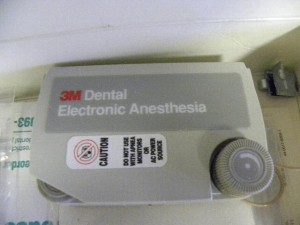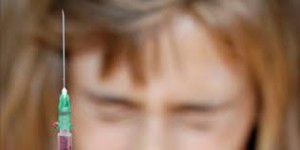In 1883, Erb wrote that “At the present time we possess in the electrical current one of the most certain and brilliant remedies for neuralgia, although we must admit that we have not made much progress in our knowledge concerning its mode of action in these forms of disease”
Transcutaneous Electrical Nerve Stimulation(TENS) in Dentistry
Temperomandibular joint or Myofacial Pain Dysfunction . TENS has been used with great success in dentally related chronic pain in the management of temperomandibular joint (TMJ ) problems for many years. Until recently the management of TMJ pain and dysfunction with TENS almost exclusively limited to physical therapists. In the recent years, dentists has been incorporated TENS into the patients for better patient compliance if the patients couldnt/scare of needles. Meizels, Clark and associate have all demonstrated the efficacy and ease of using this technique for TMJ and myofacial pain.
Acute Dental Pain : The success of EDA in acute dental pain is not as successful as the success of EDA in chronic dental pain. This is because to manage acute dental pain, a higher frequency of electronic stimulation is necessary. Eventhough one EDA unit is providing up to 16,000 Hz, the most often used frequency is 120 Hz in acute dental pain.
The areas that received the greatest interest were restoration dentistry , periodontal procedures, fixed prosthodontics and endodontics, although the clinical trials have been pursued in other areas (removable prosthodontics, oral surgery and orthodontics )
Using EDA alone (no local anaesthesia or sedation ) in restorative dentistry, Clark and associate demonstrated a statistically significant success rate when EDA was used versus a placebo EDA unit.
2 other areas in which the EDA has been used with success of dentistry include the following :
1) Providing pain control for the administration of local anaesthetic. EDA produces excellent soft-tissue anaesthesia. It may be used when local anaesthetic injections must be given.
2) Reversing Local Anesthesia. After successful inferior alveolar nerve block with lidocaine and epinephrine, EDA at its low frequency setting for a period of 10-15 minutes can successfully remove a large volume of residual anaesthetic solution and thereby partially or totally reverse the anesthetic effect.
Indications Of EDA
The most significant indication for the utilization of EDA as a technique in pain control is NEEDLE PHOBIA! If you hate shots! but once numb are “OKAY” , then you are the ideal candidate for EDA!
Other indications for EDA, either alone or combination with local anesthesia and N2O/o2, include the following :
- Ineffective local anaesthesia
- Instances where local anesthetics cannot be administered
- TMJ / MPD ( Chronic Pain )
- Nonsurgical periodontal procedures
- Restorative Dentistry ( Acute Pain)
- Fixed Prosthodontic Procedure (acute pain)
- Endodontics (recommended in conjunction with local anesthesia or N2o/O2
EDA Contraindications
- Cardiac pacemakers
- Neurological disorders
- Status post-celebrovascular accident(stroke)
- History of transient ischemic attacks
- History of epilepsy
- Pregnancy
- Immaturity ( inability to understand the concept of patient control of pain )
- Very young kids
- Old patients with senile dementia
- Language communication difficulties
- Perhaps the most significant nonmedical contraindications to the use of EDA are patients who are DENTAL PHOBICS – that is, fearful of everything dental : the smell, the sounds and sensations involved with therapeutic intervention in the mouth. To them everything a dentist does represents a threat. EDA is looked on by them as just one more thing to fear. The likelihood of success is negligible.
Also somewhat confusing to the dentist are a few patients undergo a very successful EDA treatment, but when asked which pain control technique, EDA or local anesthesia, they would prefer to undergo the same type of dental care at the next visit. state that they would choose local anaesthesia. When questioned, these patient often mention that although they didnt experience any pain, they dislike EDA for 2 reasons
- The feeling involved in EDA was too intense, bordering and uncomfortable.
- They were unable to “relax” with EDA. After a local anesthetic injection , they were at least able to relax because they knew that they would not experience any further pain during their treatment. However, with EDA they had to remain alert throughout the entire procedure, ready to increase the level of stimulation if they become uncomfortable.
Advantages of EDA
- No need for needle
- No need for injection of drugs
- Patient is in control of anesthesia
- No residual anesthetic effect at the end of the procedure
- Residual analgesic effect remains for several hours
Disadvantages of EDA
- Cost of the unit
- Training
- Learning curve. Initial success may be low but increases with experience.
- Intraoral electrodes : Weak link in the entire system. The availability of extraoral electrodes on some units has lessened this disadvantage. However clinical experience with the extraoral electrodes has demonstrate that the depth of anesthesia obtained may not always be as great as that with intraoral electrodes

